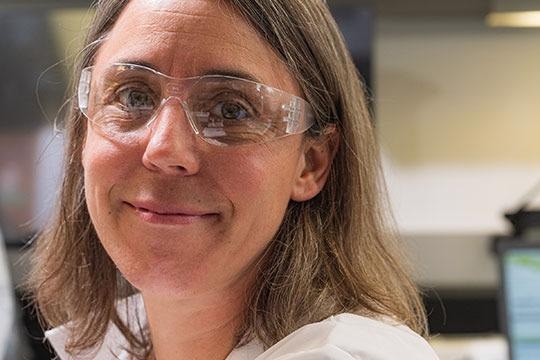Apr 5 2022Reviewed by Alex Smith
Researchers at Rice University will lead a project sponsored by the Department of Defense to enhance communications between microelectronics and microorganisms, paving the way for living sense-and-respond systems.
 Caroline Ajo-Franklin. Image Credit: Jeff Fitlow/Rice University.
Caroline Ajo-Franklin. Image Credit: Jeff Fitlow/Rice University.
One of 28 newly announced Multidisciplinary University Research Initiative (MURI) contracts for basic research on emerging technologies is a five-year, $6.25 million grant managed by Rice and shared with partners at Tufts University and Virginia Tech University.
Rice project directors Caroline Ajo-Franklin, Jonathan Silberg and Rafael Verduzco are creating electrobiology techniques that aim to make interactions between electronics and cells quicker and more efficient. Researchers anticipate that this will allow applications such as living sensors to detect and respond rapidly when water or soil is contaminated, allowing them to neutralize the pollution.
Multiple disciplines will be involved in developing the first project, which is an electrobiology system that senses and destroys environmental toxins in real-time, according to Ajo-Franklin.
Ajio-Franklin will use synthetic biology knowledge while others will contribute protein engineering (Silberg), small molecule chemistry (Emily Mevers of Virginia Tech), soft materials (Verduzco), and microsystems integration (Sameer Sonkusale of Tufts), and machine learning (Soha Hassoun of Tufts).
This work will provide foundational knowledge and capabilities to create microelectronics interfaced with microorganisms that neutralize threats to humans or the environment in real time.
Caroline Ajo-Franklin, Principal Investigator and Professor, BioSciences, Rice University
To speed up multichannel communications, the team will employ several techniques. Allosteric regulation, which cells utilize to govern protein dynamics, is one that was inspired by nature. It will be used to control newly engineered electron-transfer proteins, according to the researchers.
The activation of enzymes via linkages to electron acceptors (or anodes) is a second technique for facilitating parallel communication pathways. Finally, machine learning will be used to enable the co-design of coupled molecules and proteins that operate as communication channels.
Today, state-of-the-art biosensors can detect a single pollutant in about five minutes. This project will develop capabilities to simultaneously detect hundreds of molecules and inactivate any that are harmful.
Caroline Ajo-Franklin, Principal Investigator and Professor, BioSciences, Rice University
Rice’s E. Dell Butcher Professor Emeritus, George Bennett, will assist in the development of critical machine learning techniques, Ajio-Franklin added.
Ajo-Franklin is a CPRIT Scholar in Cancer Research and a professor of biosciences. Silberg is the head of the Systems, Synthetic, and Physical Biology Ph.D. program and the Stewart Memorial Professor of BioSciences. Verduzco is a professor of materials science and nanoengineering, as well as chemical and biomolecular engineering.
Source: https://www.rice.edu/